MANAGEMENT AND LEADERSHIP
Management and leadership are two of the most integral parts of an organisation. Knowledge management of an organisation or a project can extensively help in achievement of desired goals. In context to approaches, leadership and management are two vastly diverse aspects however; they carry a single mission to achieve organisational and project-oriented goals.
The study will focus on the importance of organisational learning and knowledge management at several levels such as collective, individual and firm. The study will further discuss the support of information systems for projects.
Background of Management and Leadership
Management can be defined as a set of collective principles, which are entirely related to the various functions related to planning. Based on the study by Chetiya and Sharma (2016), functions of planning includes directing, controlling and organising in order to harness financial, physical, informational and human resources.
Management can be defined as a set of tasks or activities, which are directed towards effective and efficient utilization of multiple resources in order to meet or serve one or more than one goal.
Management is a problem-solving process that can be nurtured and implemented to achieve the desired goal. Correct utilization of resources is extremely significant in the context of management.
As per study by Bolden (2016), a person who is responsible for management needs to have a piece of complete knowledge on organisational management.
Management is not a singular aspect as management can be defined in a wide range of categories namely as a process, discipline, activity, science, art and as a profession.
Leadership is considered as the most important aspect of an organisation. As per views of Obholzer (2018), leadership is entirely different from management.
Leadership is ensuring work with various participants participating in the activity. Leadership is mostly goal-oriented. In case of small organisations, leadership and management can carry similar responsibilities.
Leadership in context to an organisation is entirely linked with performance. Effective leadership is not related to increasing the profit margin of an organisation, in certain cases it can be said that a good leader is entirely responsible for lifting up the bottom lines of a business.
Managers and leaders are two different bodies operating for the same goal. However, in case of leadership, multiple characteristics traits are required, which extensively differentiates between a leader and a manager. As per a study by Ndalamba (2018), a leader is an inspiration that acts a director for a particular team or a set of teams working in an organisation.
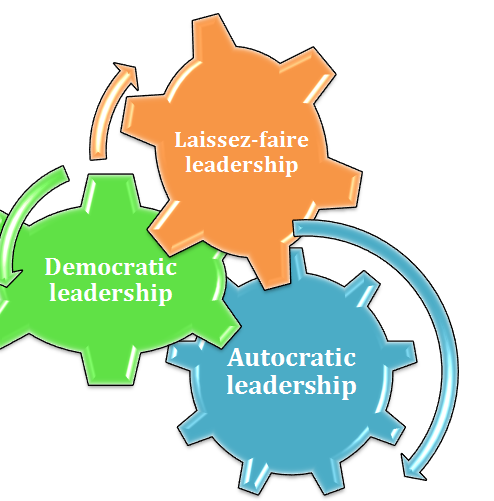
Figure 1: Behavioural theory
(Source: Lin, 2018)
Autocratic leadership
Autocratic leadership and management define that leader who can make decisions without consulting their teams. Decision-making can be fast with this leadership and management. Hence, it is useful for some short-duration projects with very tight deadline where those business needs to make their decisions early.
Democratic leadership
Democratic leadership refers to input of a team before the decisions have been made. Decision making can be slow as a weak leader is allowed to hide between collective efforts of a team (Lin, 2018). It is associated with employees since they are encouraged to share their individual ideas.
Laissez-faire leadership
Laissez-faire leadership means, “Let people do whatever they choose.” These leaders do not interfere and allow employees to do their job on their own choice. In this leadership environment, there is a risk of blaming each other while individuals will not take the responsibility.
2. Situational Leadership Theory
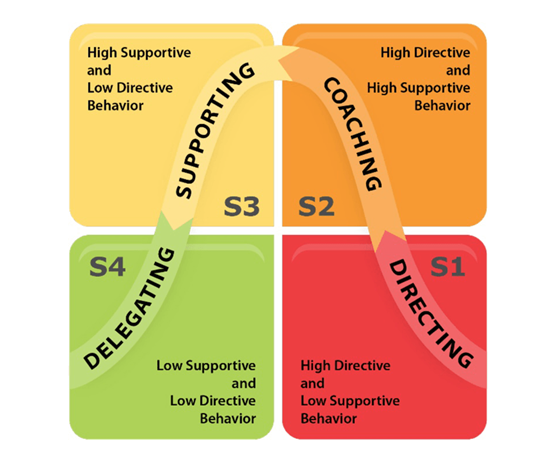
Figure 2: Situational leadership theory
(Source: Online.stu.edu, 2019)
This leadership theory is a recognition through which most leaders can change their behaviours depending on situation. A leader who is utilizing situational leadership theory can be brought to managing factors that are essential to handle organization with an autocratic hand.
Hence, these leaders are in charge of team of experts who can empower their team to brainstorm, collaborate while managing their decision-making. This style may change continually to meet needs of those organizations based on situation.
In this style, leaders generally tell the followers the needful things (Online.stu.edu, 2019). In this style, leaders offer less-direction and allow the group members to play some important role.
Great Man Theory refers to heroic act of an individual. A person who has a unique combination of qualities, personality, and personal abilities can set up as a great leader. This theory is all about compelling simplicity.
Few businesses have been turning to individuals who can possess an ability to inspire various people toward a common goal. Great man theory is based on two assumptions, such as great leaders come up when the need is important and great leaders are born possessing certain traits, which enable them to rise.
4. Fiedler’s Contingency Leadership Theory
In this theory, three things are important and they are leader-member relations, position-power and task structure. As a mixture of these three elements is followed by various degrees of favourableness, it can create some need for diverse types of leaders.
This refers to task-oriented leaders who can be placed in some situations of high or low favourableness. Hence, relation oriented leaders and managers were more successful under conditions where favourableness is intermediate.
As stated by Walls (2019), Fiedler’s theory suggests a way of capturing motivational orientation of leaders, who can measure attitudes they can express about their least preferred co-workers.
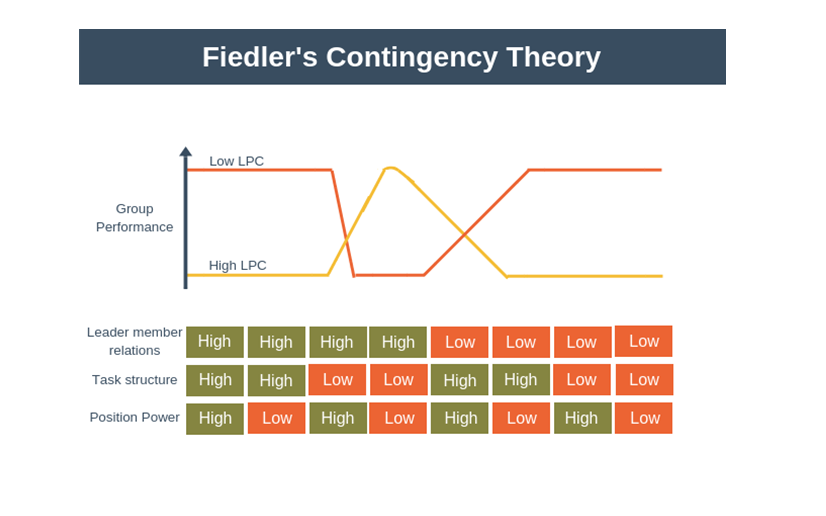
Figure 3: Fiedler’s Contingency Leadership Theory
(Source: Farhan, 2018)
5. House’s Path-Goal Leadership Theory
As per this theory, central issue is motivation. This theory addresses unique need of leaders and managers to perform several layer styles. Those aspects can provide general satisfaction for followers, and motivate them to increase performance.
There are four leadership and management styles mentioned in the House Path-Goal Theory. The styles are ambiguous tasks, ambiguous non-repetitive tasks, non- involving tasks of ambiguous nature, and dissatisfying & stressful tasks (Farhan, 2018). In this model, leaders provide guidelines while the subordinators know what can be expected from them.
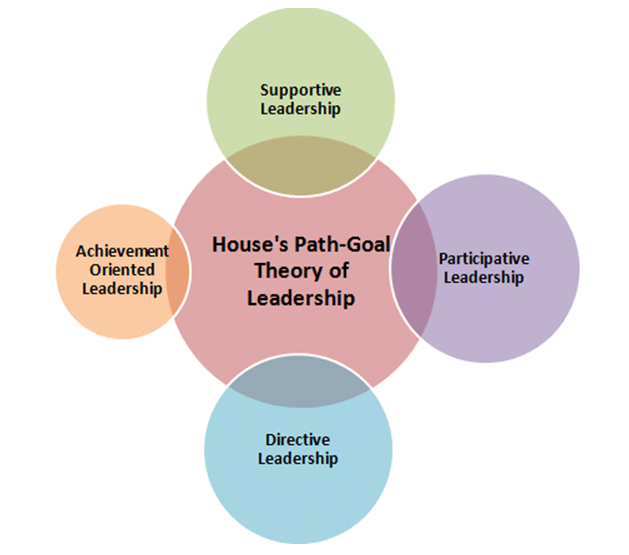
Figure 4: House’s Path-Goal Leadership Theory
(Source: Farhan, 2018)
6. Full Range Leadership Model
- Transformational Leadership
The transformational theory is based on idea where role of a leader is to transform their organization. In the sense, it can bring new ways of looking to organization and specifically a vision of what it can be (Anderson and Sun, 2017).
Transformational leadership theory focuses on growing future of business and incurs changes that are essential to make improvements. Transformational leaders and managers can use carrot and stick approach to influence their followers to provide incentives and rewards.
Transformational leaders focus on their followers to motivate themselves, thereby supporting each other. Hence, this theory refers to defectiveness of leader and manager, achievement-oriented, participative, and supportive.
- Transactional Leadership
James McGregor has introduced transactional leadership theory. Transactional leadership views exchange of rewards for compliance. This style can motivate followers by appealing to their self-interest. In addition, transactional leadership theory is related to bureaucratic authority that emphasizes certain legitimate power and shows respect for their rules and tradition.
According to Khan (2017), various researchers have connected transactional leadership with management. Transactional leadership includes skills, for example, contingent reward, management by exception.
CPR leadership model refers to courtesy, professionalism, & responsibility. Courtesy seems to be great place for the development of team that helps to build effective team. Leaders, adopting such a model need to maintain professionalism. The main approach of CPR is to educate the supervisors to maintain responsibilities and compliance courtesy.
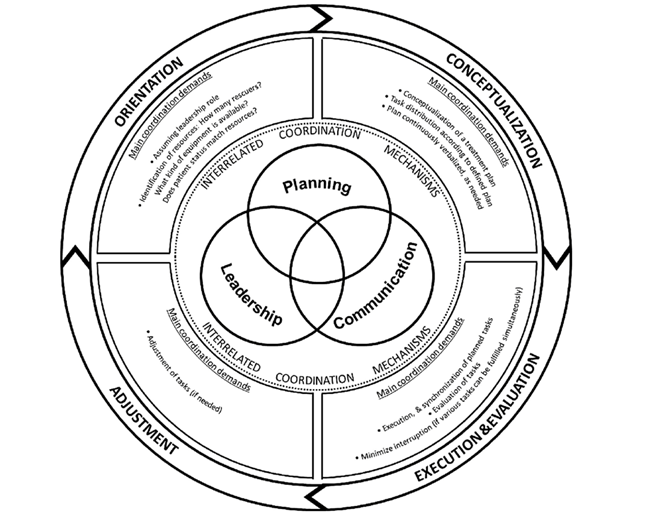
Figure 5: CPR Leadership Model
(Source: Khan, 2017)
8. Roles meaning in management & leadership
Some roles have suggested over past years, that need a varying degree and this includes mixture of leadership and management practices. The roles can be associated with specific style, to develop extension of a style (Mostafa and Bottomley, 2020).
A role of management, including leadership can often be chosen unconsciously and cannot be outlined explicitly in an organization. This appears changes because of gaps that need to be filled in managerial jobs. Several roles involve in managing leadership and its management are as follows:
- Management roles measure people by their past records, present performances and leadership evaluate such potential for the things that cannot be measured.
- Leaders follow their individual instinct and managers follow the policy of the organization (Mostafa and Bottomley, 2020)
- Role of leadership is to direct and develop organizational vision to lay down structure of management.
- Management deals with technical dimensions within organization to simulate roles and functions of leadership, thereby influencing each aspect of it (Schnee, 2017).
- Management focuses on planning, organizing to implicate roles of staffing and controlling in organization. Furthermore, leadership is a part of its directing function where leaders keep eyes on building relationships to prioritize teamwork.
Strategic Importance of Knowledge and Organisational learning
Knowledge of organisational learning
In the case of an organisational process, knowledge is isolated embedded into a specific business process. Business processes include relationships and activities that are specified over time by implementing a continuous series related to improvements.
Strategic Importance of knowledge management process
Individual Level
Knowledge is widely known as a form of justified personal belief. As per the views of Duffield and Whitty (2016), knowledge in context to organisational learning can be defined as a vast array of business related information stored inside of an individual.
There are two kinds of knowledge based on organisational processes namely explicit and tacit knowledge. Tactical knowledge is entirely concerned with the mental conditioning of organisational human resources.
Most knowledge gained by an individual responsible for a particular activity is tactical in nature. The inhibition of tactical knowledge is mostly done by error and trial method namely project failures, not meeting organisational objectives, and poor definition of a project scope.
Firm-Level
There are several importances of knowledge management processes in an organisation. According to a study by Presbitero et al. (2017), knowledge management is entirely associated with organizing and planning of activities related to a business process.
Such activities involve controlling human resources along with motivating them in order to ensure that assets related to knowledge and information are effectively improved and employed.
Strategies related to knowledge management involves the evaluation of printed documents of an organisation containing manuals and patents, various data and information stored in electronic repositories, employee database and information related to completion of a particular task.
Collective Level
Knowledge management process involves the creation and acquisition of external knowledge. As per a study by Allameh et al. (2017), these activities involve various sub-activities related to transfer, refinement, storage, utilization, and knowledge sharing.
Importance of knowledge management includes extensive focus on the managerial activities. Process of knowledge management includes improvement and leveraging of the current organisational knowledge.
Knowledge Process Cycle
Strategic importance of knowledge management includes the management process cycle. As per study by Pantouvakis and Bouranta (2017), a knowledge process cycle involves four aspects. The process cycle model extensively describes numerous knowledge management processes and defines the relationships among the key processes.
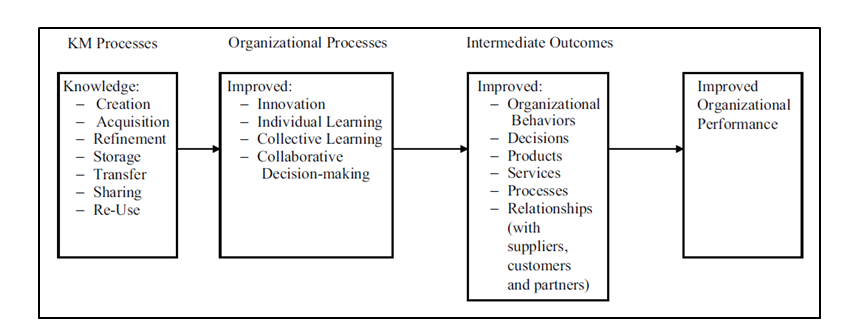
Figure 6: Knowledge Management process Cycle
(Source: Pantouvakis and Bouranta, 2017)
This model extensively defines the link between all the activities related to knowledge management. Strategic importance of knowledge management with help of various processes is innovation, individual learning, collective learning, and collaborative decision making. Intense knowledge can be used to significantly improve the above-mentioned skills.
Improvement of related processes can result in improvement of numerous intermediate outcomes. According to a study by Presbitero et al. (2017), organisational behaviour, decision-making capabilities of the management, products, and services along with relationships with suppliers and distributors are also improved.
Once all the measures inside of an organisation are improved, the entire organisational process are improved which further results in achieving the desired goal of any organisation.
Organisational learning is a process by the help of which a particular organisation improves itself. The improvement is done over time and by gaining experience. As per the study by North and Kumta (2018), the experience and knowledge that is gained through all the learning process are used to create knowledge.
Created knowledge gained through the processes is used within the business for improvement.
There are three basic factors in context to organisational learning. The three main factors are conceived, act, and reflect. Organisational learning is done mainly through the process of reflection. The product or idea is conceived in the organisation through the learning process.
The creation of the idea or the product is reflected upon in case of organisational learning. In case of the actions in organizational learning, there are three main processes, which occur, namely knowledge creation, retention, and knowledge transfer.
Strategic importance of organisational learning
There are various strategic advantages that are gained through the entire process of learning. One of the major aspects that are improved is enhancement of job satisfaction. Based on the study by Olszak et al. (2018), employee turnover rates largely decreased due to such learning processes.
Productivity, efficiency, and profit margins are also increased. Another major strategic advantage that is gained from the organisational learning process is the development of leaders at each level of organisation.
Relationship between organisational learning and knowledge management can be conceptualized in several ways.
Learning activities focus on the entire organisational process whereas knowledge management mainly focuses on the content. Organisational learning is considered to be a goal of knowledge management. With the help of knowledge management, organisational learning activities can be largely improved.
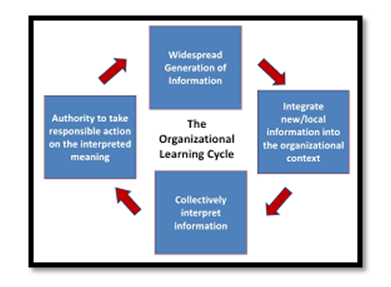
Figure 7: The organisational learning cycle
(Source: Budiarto et al. 2017)
The entire process of transferring knowledge throughout the organisation can be stated as organisational learning. Based on the study by Budiarto et al. (2017), as the entire business gains experience, the whole idea of learning activities is to improve the capabilities of an organisation.
Once a particular activity of a business fails to meet the organisational goals, knowledge gained from the experience must be used to incorporate the required changes. Learning activities can be rotated through the entire organisation with the help of mental models, shared vision, system thinking, and team learning activities.
Information systems (IS) in an organisation are significant with respect to current standards. One of the most basic standards of an organisation is to integrate an information system to manage data storage and data processing.
As per a study by Donate et al. (2017), support information systems are a set of components that work compositely to manage the entire work of any particular project. Working principle of an information system is completely goal-oriented. Information systems that support a project are formal socio-technical systems that are created to fulfil the organisational needs.
There are several components of a particular project. Business projects include multiple analysis and marketing operations. The automation of all such operations is done by a supporting information system.
The integration of IS can also increase the efficiency and potential of leaders and managers working in an organisation. A leader or even a manager is responsible for critically managing a particular task.
With the help of IS, several activities can be automated which directly helps a responsible person. As per a study by Santoro et al. (2018), market analysis requires extensive data collection and knowledge management. Integration of an IS can help a project manager to collect data from various sources irrespective of geographical barriers.
Such measures of data collection increase the overall efficiency of the project and help in successful completion by reducing time complexity.
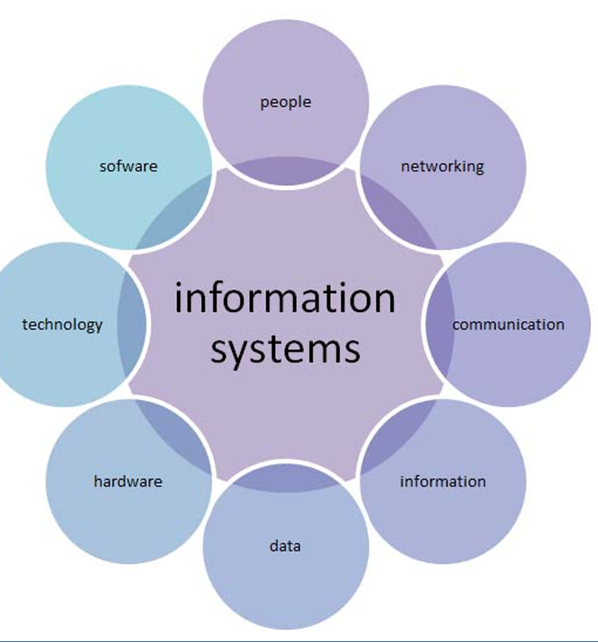
Figure 8: Support information systems for projects
(Source: Mohapatra et al. 2016)
Nowadays IS integrated with machine learning which makes it capable enough to independently filter out irrelevant data. ISs are created mainly to organise and retrieve relevant data from a company’s main hub.
Primary benefit of an IS, is that these systems can provide information to the end-user. IS can also be programmed for data abstraction as well which makes these systems safer to use.
According to a study by Mohapatra et al. (2016), the difference between a normal computer system and a specific IS, is that data retrieval can be done in a normal computer system as well however IS can provide appropriate information related to an end user’s query.
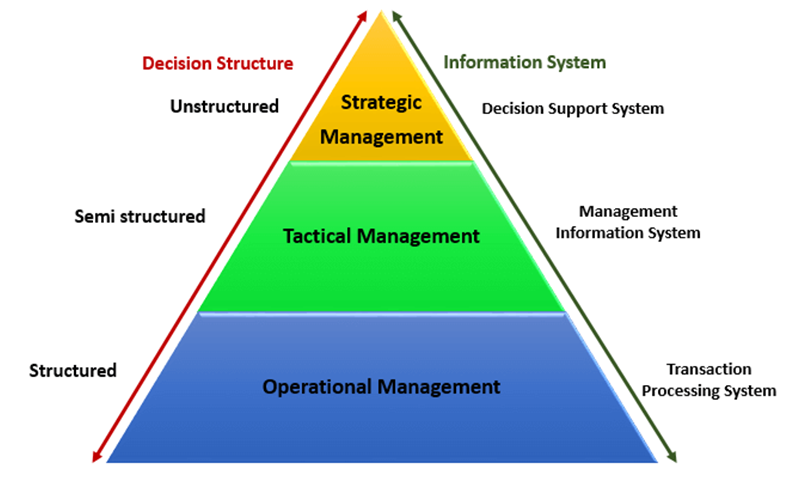
Figure 9: Support of information systems throughout an organisation
(Source: Aarseth et al. 2017)
Leaders or managers of a project such as project managers can use such information systems. IS are a collection of numerous system techniques and tools, which are extensively used in activities related to project management. Project managers extensively use a IS to combine, collect and store information in IS’s database.
In case of an ongoing project, integration of IS can help in execution of a project and can also contribute in meeting project management goals. Information system of a project can help in creating a budget framework also. These frameworks contain information about related costs for the project.
Cost estimation is a key aspect of project management, framework related to budget estimation helps a manager to make decisions regarding the project.
Integration of IS can also provide information about individual performance of the participants. Routine collection of performance information is important for a project manager to assess the individual performances. Information gathered through this can help in selection of appropriate candidates for the upcoming projects.
Information systems can help in enhancing poor scope definitions. Risk management of any project is managed by the integration of an IS. As per the study by Aarseth et al. (2017), effective communication is promoted by IS, information exchange and communication among the entire hierarchy of a project is initiated by IS.
Experience project managers can get a huge amount of help from information systems. Information systems of large organisations largely rely on online analytical processing.
Knowledge Management strategies of a project
Knowledge management strategies can be of two types in an organisational context As per a study by Bhatti et al. (2016), personalisation codification is the two most popular knowledge management strategies used all over the world.
Codification is related to the implementation by electronic document system, which is used to store and codify knowledge and then can be later rescued.
However, in contrary to codification, personalisation entirely focused on developing a particular network to facilitate knowledge in between people of an organisation. Channelling of individual expertise is done in case of personalisation.
Codification
Sub strategies of codification are systems, process, strategic, and commercial.
Systems are focused on refining and creating new repositories. Knowledge repositories will be used to maintain and motivate people for contribution. Human resources of the organisation will provide content to the knowledge repositories.
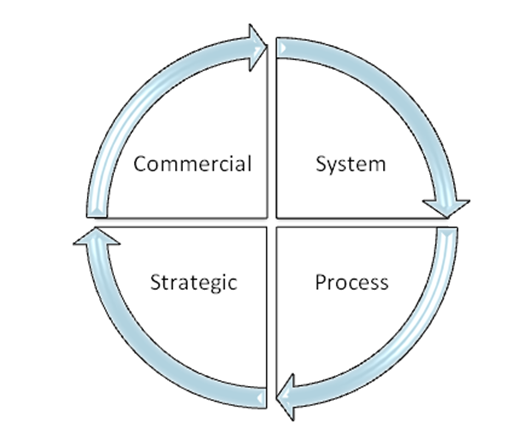
Figure 10: Strategies of Codification
(Source: Mohajan, 2017)
Process strategy is oriented with reuse of a particular method that has already been used in previous projects or activities. Based on a study by Mohajan (2017), development of repeatable processes, which support knowledge, gained from previous processes.
Another most significant aspect of knowledge management strategy is the management of intellectual properties of the business. Intellectual property of an organization refers to trademarks, patents, and ideas.
Strategic aspect of knowledge management is the creation of a whole new strategy for a particular operation. Creation of a competitive strategy with the help of knowledge capability is done in a strategic aspect.
Personalisation
Sub strategies of personalisation are cartographic, organisational, and social.
Cartographic concerns the creation of knowledge maps, which is used to connect people inside the business organisation. According to the views of Andriani et al. (2016), creation of network and directories is used to derive a connection among the human resources.
Figure 11: Strategies of personalisation
(Source: Andriani et al. 2016)
Organisational refers to the creation of intranet and groupware that extensively facilitates communication. Such communication measures help to derive the communities of practice.
Social is entirely concerned with the creation of physical spaces. These physical spaces are created to facilitate communication, which will further result in exchange of information among the human resources of an organisation. Facilitating discussion can be an integral part of knowledge management.
There are numerous general knowledge management strategies that are practised in several organisations all over the globe. Motivation is a strategy, which concerns providing incentives and rewards to the employees. Sharing and gathering of knowledge in an organisation are two of the most common practices.
Analysis of past decisions and current situation can increase knowledge for the managers as well as for the employees. Extensive study about human resource of an organisation and their related processes can increase organisational knowledge in an individual.
Leaders of an organisation or a specific team need to have knowledge about related work to gain control over a specific project.
In conclusion, to the entire study, it can be said that management and leadership are an integral part of an organisation. It has been found out from the study that leadership and management are two entirely different aspects of an organisation. It has also been found that leadership and management both require extensive knowledge management skills.
Knowledge management cycle and organisational learning cycle can increase the efficiency of a business. It has been found out that support information systems can help in increasing the efficiency of several tasks like budget analysis, individual performance management, and data retrieval.
There are two strategies of knowledge management namely codification and personalisation, both of the strategies focus on improving knowledge gathering skill of an organisation.
Aarseth, W., Ahola, T., Aaltonen, K., Økland, A. and Andersen, B., 2017. Project sustainability strategies: A systematic literature review. International Journal of Project Management, 35(6), pp.1071-1083.
Allameh, S.M., Hosseini, S.H., Samadi, A. and Darikandeh, A., 2017. The relationship between intangible organisational capitals, knowledge management, and organisational learning. International Journal of Knowledge-Based Development, 8(3), pp.249-270.
Anderson, M.H. and Sun, P.Y., 2017. Reviewing leadership styles: Overlaps and the need for a new ‘full‐range’ theory. International Journal of Management Reviews, 19(1), pp.76-96.
Andriani, M., Suryadi, K., Samadhi, T.M.A.A. and Siswanto, J., 2016, December. Evolution of product design and development process on organizational growth stages: A knowledge management strategy. In 2016 IEEE International Conference on Industrial Engineering and Engineering Management (IEEM) (pp. 30-34). IEEE.
Bhatti, W.A., Larimo, J. and Carrasco, I., 2016. Strategy’s effect on knowledge sharing in host country networks. Journal of Business Research, 69(11), pp.4769-4774.
Bolden, R., 2016. Leadership, management and organisational development. In Gower handbook of leadership and management development (pp. 143-158). Routledge.
Budiarto, D.S., Prabowo, M.A. and Herawan, T., 2017. An integrated information system to support supply chain management & performance in SMEs. Journal of Industrial Engineering and Management (JIEM), 10(2), pp.373-387.
Chetiya, A.R. and Sharma, K., 2016. Organisation, Management and Leadership for Six Sigma Approach. BULMIM Journal of Management and Research, 1(1), pp.47-54.
Donate, M.J., de Pablo, J.D.S., Guadamillas, F. and González-Ramos, M.I., 2017. The Role of Knowledge Management Strategies in Cooperation Agreements. In Strategic Information Systems and Technologies in Modern Organizations (pp. 128-150). IGI Global.
Duffield, S.M. and Whitty, S.J., 2016. Application of the systemic lessons learned knowledge model for organisational learning through projects. International journal of project management, 34(7), pp.1280-1293.
Farhan, B.Y., 2018. Application Of Path-Goal Leadership Theory And Learning Theory In A Learning Organization. Journal of Applied Business Research (JABR), 34(1), pp.13-22.
Khan, N., 2017. Adaptive or transactional leadership in current higher education: A brief comparison. International Review of Research in Open and Distributed Learning, 18(3), pp.178-183.
Lin, C.W., 2018. Investigating the Theoretical Structure of Deliberative Democratic Leadership. Journal of Education and Training Studies, 6(9), pp.168-173.
Mohajan, H.K., 2017. Knowledge Management Strategy to Improve Business Sector. Annals of Spiru Haret University. Economic Series, 17(3), pp.19-32.
Mohapatra, S., Agrawal, A. and Satpathy, A., 2016. Designing knowledge management strategy. In Designing Knowledge Management-Enabled Business Strategies (pp. 55-88). Springer, Cham.
Mostafa, A.M.S. and Bottomley, P.A., 2020. Self-sacrificial leadership and employee behaviors: An examination of the role of organizational social capital. Journal of Business Ethics, 161(3), pp.641-652.
Ndalamba, K., 2018. Leadership ethos: a framework for value creation in organisation management. Journal of Business and Management, 20(6), pp.44-49.
North, K. and Kumta, G., 2018. Knowledge management: Value creation through organizational learning. Springer.
Obholzer, A., 2018. The leader, the unconscious, and the management of the organisation. In The Systems Psychodynamics of Organizations (pp. 197-216). Routledge.
Olszak, C.M., Bartuś, T. and Lorek, P., 2018. A comprehensive framework of information system design to provide organizational creativity support. Information & Management, 55(1), pp.94-108.
Online.stu.edu, (2019). What Is Situational Leadership®? How Flexibility Leads to Success, viewed on 25/02/2020 <https://online.stu.edu/articles/education/what-is-situational-leadership.aspx>
Pantouvakis, A. and Bouranta, N., 2017. Agility, organisational learning culture and relationship quality in the port sector. Total Quality Management & Business Excellence, 28(3-4), pp.366-378.
Presbitero, A., Roxas, B. and Chadee, D., 2017. Effects of intra-and inter-team dynamics on organisational learning: role of knowledge-sharing capability. Knowledge Management Research & Practice, 15(1), pp.146-154.
Santoro, G., Vrontis, D., Thrassou, A. and Dezi, L., 2018. The Internet of Things: Building a knowledge management system for open innovation and knowledge management capacity. Technological Forecasting and Social Change, 136, pp.347-354.
Schnee, C., 2017. Understanding a leader’s behavior: Revisiting the role of reputation management in leadership research. Corporate Reputation Review, 20(1), pp.27-39.
Walls, E., 2019. The Value of Situational Leadership. Community Practitioner, 92(2), pp.31-33.


